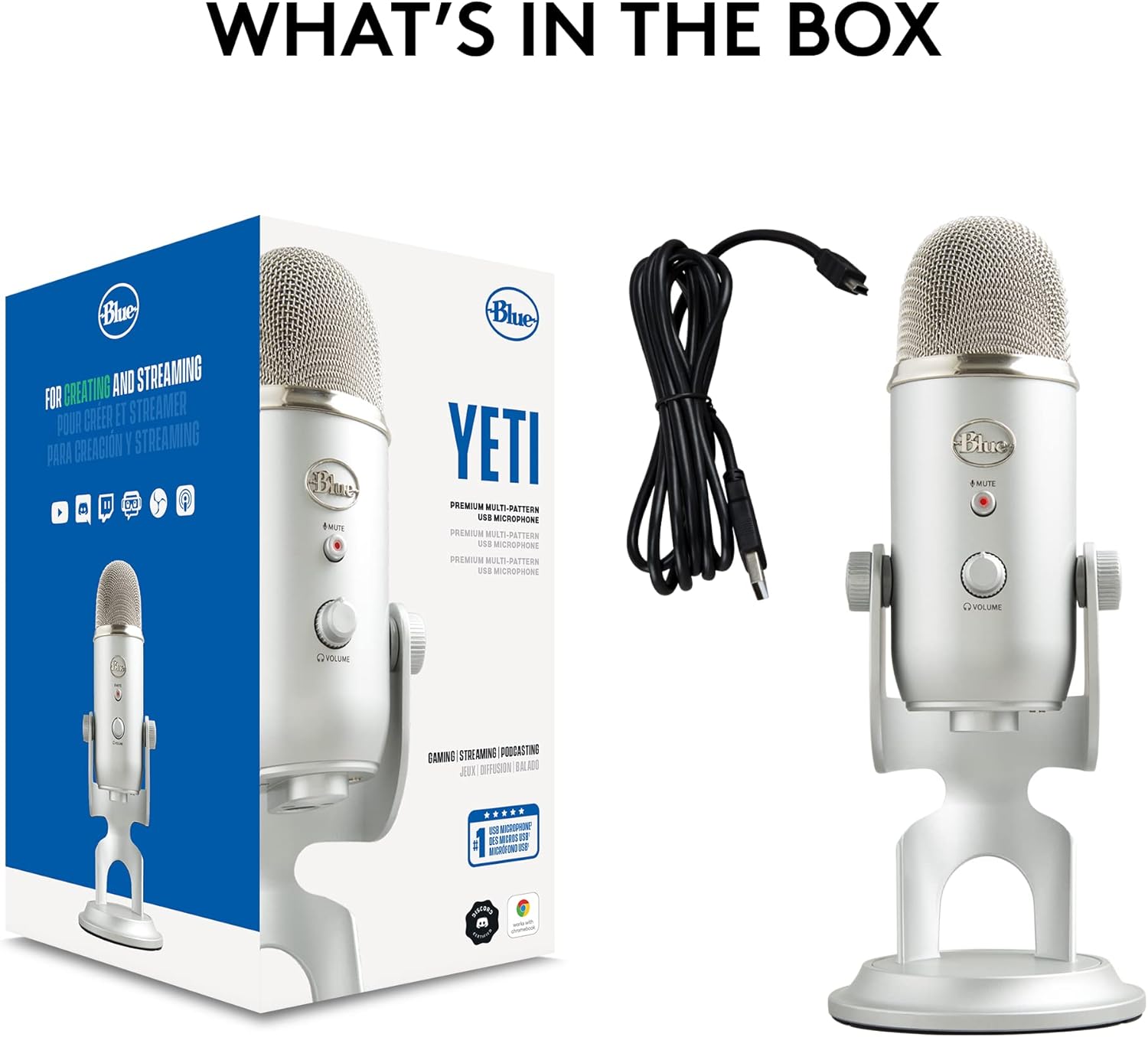Blue Yeti Blackout vs Blue Yeti Comparison !
The Blue Yeti and Blue Yeti Blackout are two popular models from the blue yeti company and very popular among podcasters, streamers, musicians, and online content creators. In this review, we will compare the both models against each other to see which model you choose for recording videos and podcasts in 2025. Lets start-
Design and build quality

The standard Blue Yeti microphone comes with 6 colors and offers a wide range of aesthetic choices in 2025. The classic design features a robust metal construction body with a prominent Blue logo and looks sleek and professional in the video. The microphone can easily fit in any desk and weigh around 3.4 pounds and 12 inches tall.
On the other hand, the Blackout edition of the blue yeti microphone offers more stealth and uniform appearance. It’s finished in an all-black color to the bottom and appears to be more minimalistic and professional. Even though the fundamental desigh remains same between the two models, the color variant is the only factor for you to choose what color appearance you want to record videos and podcasts in 2025. Let’s dive into some technical specifications of these two microphones –
Technical Specifications
Both the Blue Yeti and Blue Yeti Blackout model share the same technical capabilities when it comes to polar patterns. They offer four distinct recording modes:
- Cardioid Mode: Ideal for podcasting, voiceovers, and solo streaming. Captures sound directly in front of the microphone while minimizing background noise.
- Bidirectional Mode: Perfect for interviews or two-person podcasts. Captures sound from both the front and back of the microphone.
- Omnidirectional Mode: Records sound equally from all directions. Great for capturing room ambiance or group discussions.
- Stereo Mode: Creates a wide, realistic sound image by using the left and right channels.
- Built-in headphone jack for direct monitoring
Performance
In our testing, both microphones deliver exceptional vocal clarity. The cardioid mode of this microphone provides crisp, clear recordings with minimal background noise. Whether you’re recording podcasts, voiceovers, or streaming, both models offer professional-grade audio quality.
The Blue Yeti’s large diaphragm condenser capsules ensure rich, warm vocal tones. You can expect detailed sound reproduction that captures subtle nuances in vocal recordings.
For content creators who want to use it for streaming and gaming both microphones delivers exceptional sound quality. The multiple polar patterns allow for flexible recording setups. You can easily switch between cardioid mode for solo streams and bidirectional mode for collaborative content.
While primarily marketed as a vocal microphone, the Blue Yeti series performs excellent in acoustic instrument recording. The stereo and omnidirectional modes provide versatility for capturing different musical scenarios.
Connectivity
Both the standard Blue Yeti and Blackout edition offer:
- USB connectivity
- Plug-and-play functionality
- Compatible with Windows, Mac, and Linux
- No additional drivers required
- Direct computer connection
Pricing
Typically priced in the mid-range USB microphone market, usually around $100, the standard Blue Yeti offers excellent value for its versatility and performance.
The Blackout edition is usually priced similarly to the standard model. The primary difference is the aesthetic, with no significant performance variations.
Pros and Cons
Here is the list of pros and cons of both blue yeti and blue yeti blackout model in 2025.
Blue Yeti Pros
- Versatile polar patterns
- High-quality audio reproduction
- Sturdy build quality
- Zero-latency headphone monitoring
- Easy setup
Blue Yeti Pros (Blackout Edition)
- All the standard Blue Yeti advantages
- Sleek, professional black finish
- Modern aesthetic appeal
Potential Cons for Both Models
- Relatively heavy
- Can pick up mechanical keyboard sounds
- Requires manual gain adjustment
- Slightly bulky for portable setups
Who is it for?
The standard blue yeti is ideal for :
- Podcasters wanting color variety
- Content creators with colorful workspace setups
- Users who prefer a more vibrant microphone appearance
The blue yeti blackout model is ideal for :
- Professional streamers
- Minimalist workspace enthusiasts
- Content creators preferring a sleek, uniform look
The primary difference between Blue Yeti and Blue Yeti Blackout ultimately comes down to personal aesthetic preference. The core microphone performance, technical specifications, and recording capabilities remain same for both microphones. Your decision should be based on:
- Workspace design
- Personal color preference
- Professional aesthetic requirements
Both microphones represent excellent investments for content creators, offering professional-grade audio in a user-friendly package.
Final Thoughts
Whether you choose the standard Blue Yeti or the Blackout edition, you’re investing in a high-quality USB microphone that has proven its worth across multiple content creation domains. The slight variations in appearance do not compromise the microphone’s stellar audio performance.
For most users, the decision will be purely cosmetic. Both microphones deliver exceptional value, making them top choices in the USB microphone market.